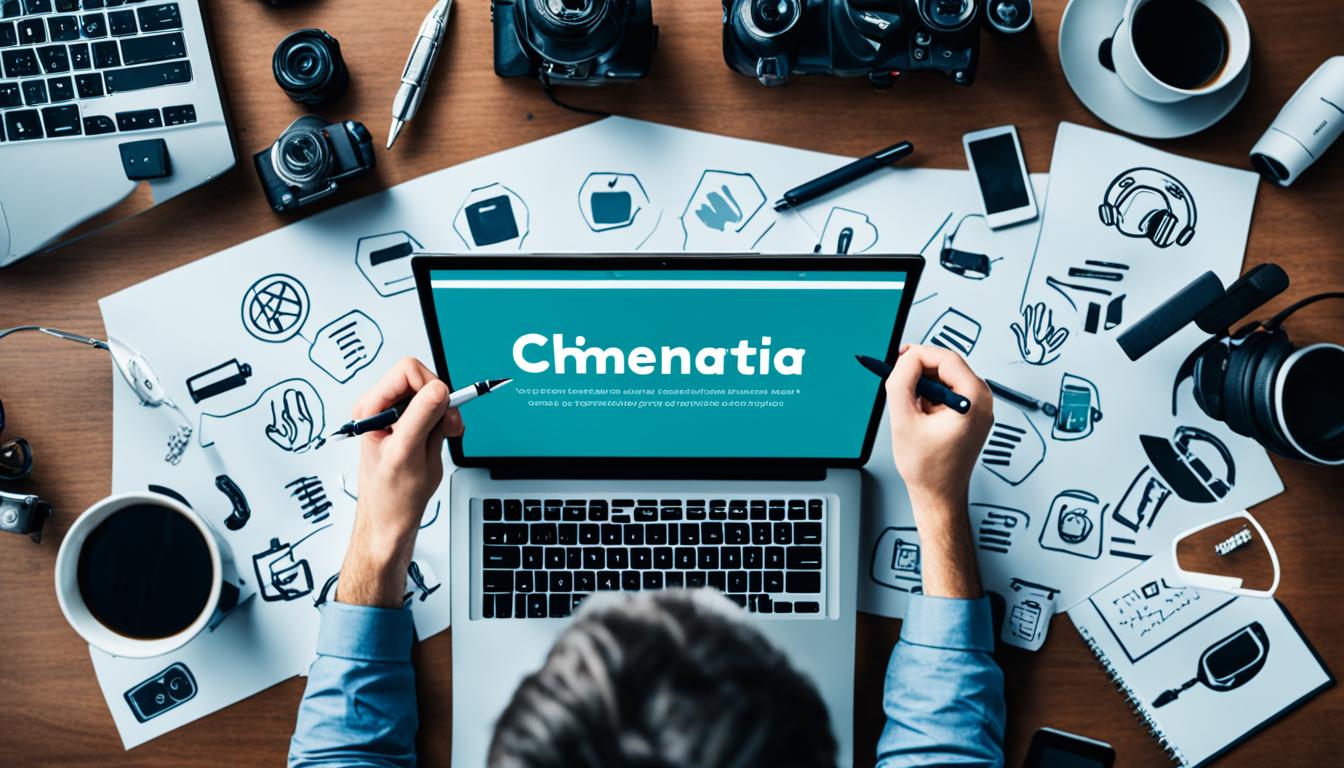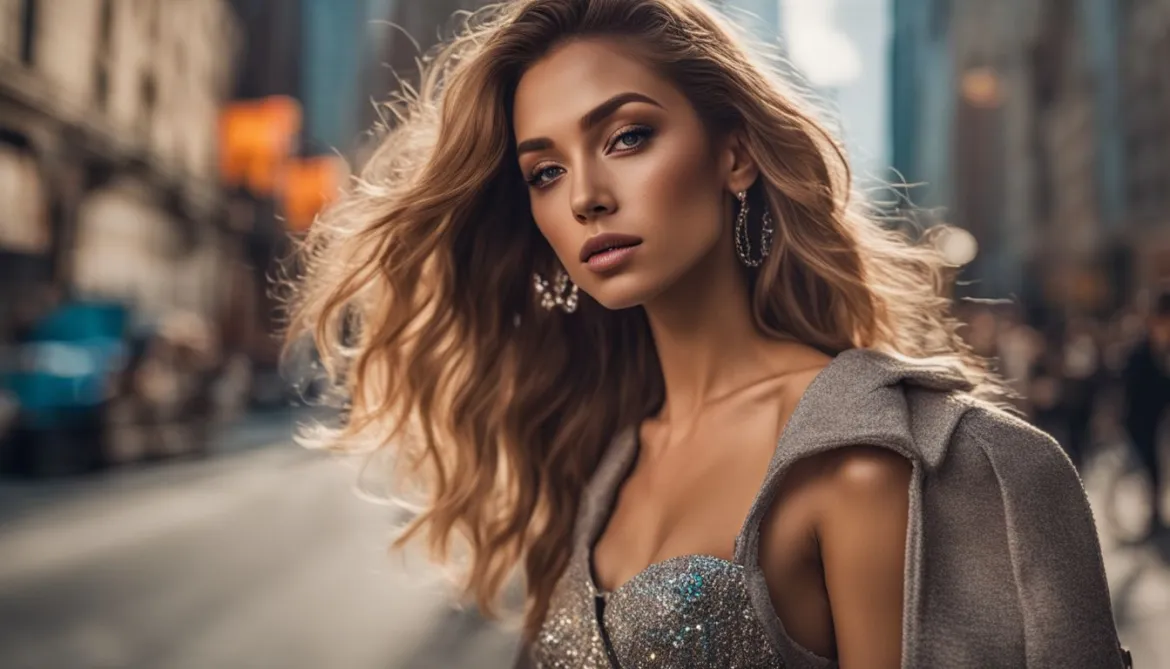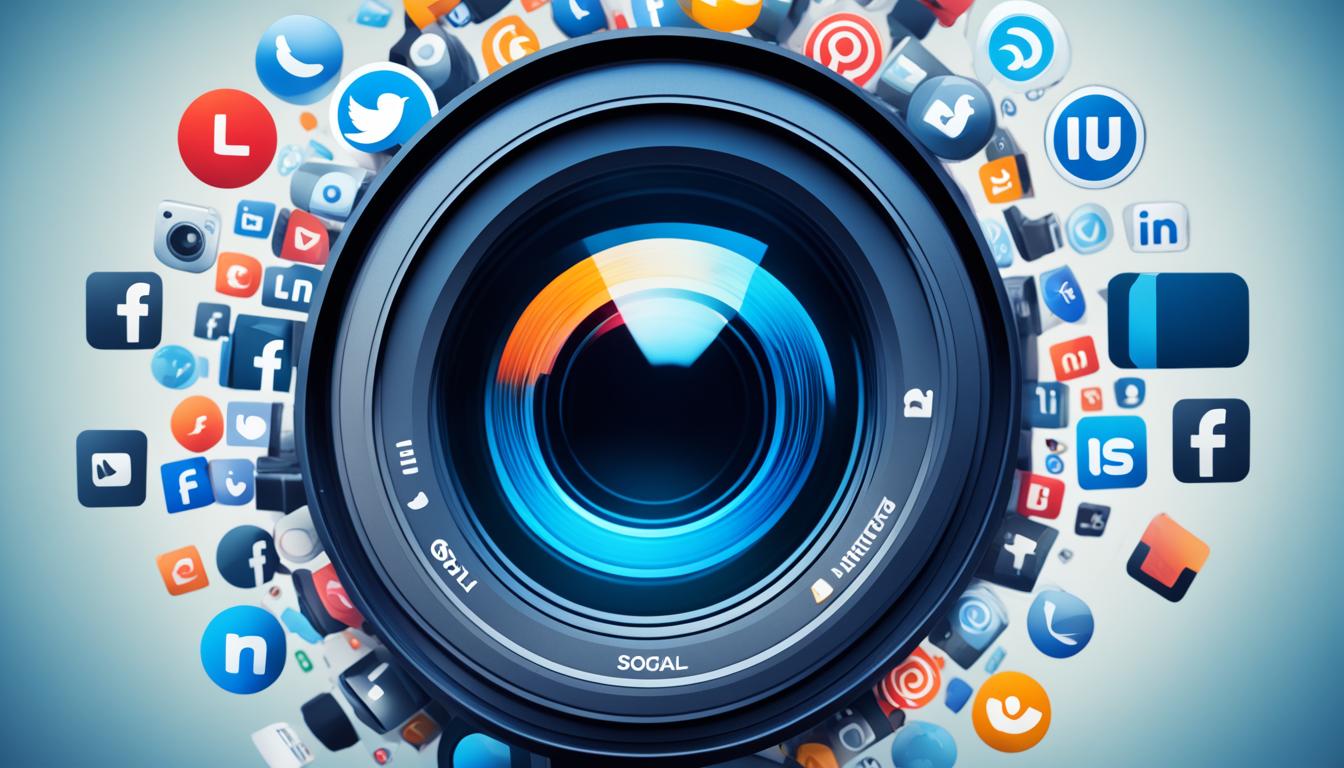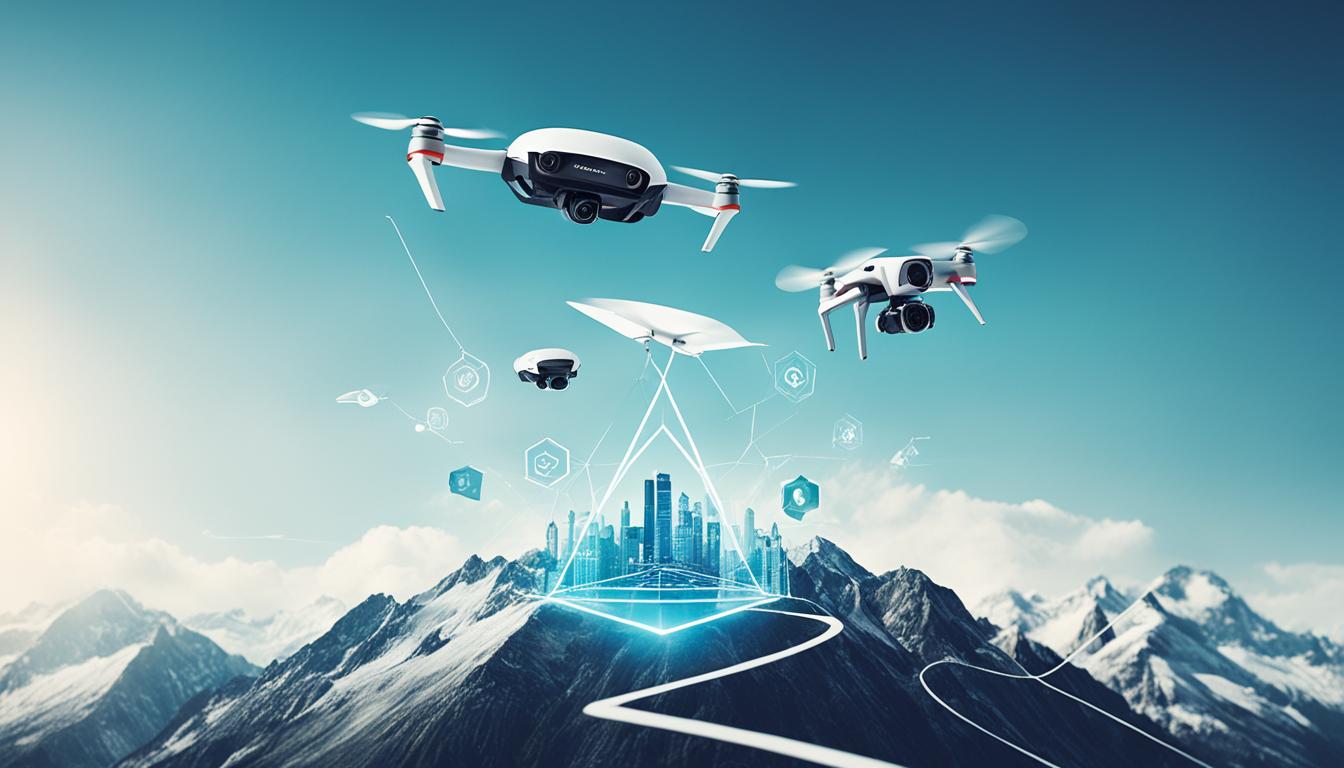When it comes to editorial assignments, choosing the right gear is crucial for capturing stunning visuals and telling compelling stories. In this article, we will guide you through the process of selecting the best camera, lenses, and other equipment for editorial shoots. We will provide practical tips and insights based on the experiences of professional photographers and industry experts.
Key Takeaways:
- Choosing the right gear is essential for capturing impactful visuals and compelling stories in editorial photography.
- Investing in high-quality cameras, lenses, lighting equipment, and accessories can enhance creativity, efficiency, and overall image quality.
- Consider the specific requirements of each project when selecting gear, taking into account location, subject matter, lighting conditions, and desired aesthetic.
- A versatile camera with a high-resolution sensor and advanced autofocus system is recommended for editorial assignments.
- A selection of lenses, including a versatile zoom lens, prime lenses, and wide-angle lenses, allows for creative flexibility in capturing different subjects and scenes.
The Importance of Gear in Editorial Photography
Gear plays a vital role in editorial photography, as it directly impacts the quality of the images produced. The right camera, lenses, lighting equipment, and other accessories can enhance creativity, improve efficiency, and ensure professional results. By investing in reliable and high-quality gear, photographers can confidently tackle different editorial assignments and meet the specific requirements of each project.
“Having the right gear is like having a trusted ally on your side. It enables us to push the boundaries of our creativity and capture moments that truly resonate with viewers.”
When it comes to editorial shoots, having the appropriate gear is essential for delivering exceptional visuals and engaging storytelling. Whether it’s capturing the vibrancy of a fashion spread or documenting the emotions of a news event, the right equipment empowers photographers to convey their vision accurately.
Let’s take a closer look at some of the key gear considerations for editorial photographers:
Camera:
Choosing the right camera is crucial for editorial assignments. Professionals often opt for full-frame DSLRs or mirrorless cameras, which offer high resolution, advanced autofocus systems, and compatibility with a wide range of lenses. These cameras provide excellent image quality, low-light performance, and the ability to capture fast-moving subjects, enabling photographers to capture impactful images.
Lenses:
The lens selection is equally important in editorial photography. Different lenses serve different purposes and help photographers convey their intended message. Versatile zoom lenses, such as the 24-70mm or 24-105mm, are ideal for capturing a variety of subjects, while prime lenses like the 50mm or 85mm are perfect for portraits and detail shots. Wide-angle lenses like the 16-35mm allow photographers to capture expansive environments and tell a broader story.
Lighting Equipment:
Lighting equipment is crucial for creating the desired mood and highlighting key details in editorial images. Portable strobes or speedlights with adjustable power, along with modifiers like softboxes, umbrellas, and reflectors, help photographers control and shape light to achieve their vision. A portable light meter can also be useful for accurately measuring and achieving consistent exposures in different lighting conditions.
Other Accessories:
In addition to cameras, lenses, and lighting equipment, there are other accessories that enhance the editorial photography workflow. These include a sturdy tripod for stability and long exposures, extra batteries and memory cards for uninterrupted shooting, a comfortable camera bag for easy transportation, and post-processing software for editing and retouching images.
Remember, having the right gear is not just about owning the latest or most expensive equipment. It’s about selecting the tools that suit your shooting style, meet the specific demands of the assignment, and allow you to express your creative vision.
Investing in editorial photography gear that meets both your technical and artistic needs will empower you to deliver outstanding results and tell compelling stories through your images.
Stay tuned for the next section where we’ll delve into the process of choosing the right camera for editorial assignments.
Choosing the Right Camera for Editorial Assignments
When it comes to editorial assignments, selecting the best camera is essential to ensure the highest quality images. As professional photographers, we understand that the choice of camera depends on several factors, including budget, resolution, image quality, and versatility. To capture stunning visuals and effectively tell compelling stories, many editorial photographers prefer full-frame DSLRs or mirrorless cameras.
Full-frame DSLRs and mirrorless cameras offer significant advantages for editorial photography. They are equipped with high-resolution sensors that deliver exceptional image quality, even in challenging lighting conditions. The advanced autofocus systems of these cameras enable precise and fast subject tracking, making it easier to capture dynamic moments that are often required in editorial shoots.
Furthermore, the vast selection of compatible lenses for full-frame cameras provides photographers with versatility and creative possibilities. Whether it’s a wide-angle lens for environmental portraits or a telephoto lens for capturing detailed shots, having a wide range of lenses ensures that photographers can adapt to different shooting situations and achieve their creative vision.
Additionally, full-frame cameras excel in low-light photography, allowing editorial photographers to work seamlessly in various environments and lighting conditions. The larger sensor size of these cameras enables better noise performance and improved dynamic range, resulting in clear and detailed images, even in challenging lighting situations.
Choosing the right camera is crucial for editorial photographers as it directly impacts the quality of the images produced. By investing in a reliable and high-performance camera, we can confidently tackle different editorial assignments and meet the specific requirements of each project.
Ultimately, the best camera for editorials is one that aligns with your shooting style, budget, and desired image quality. It’s essential to carefully consider the specific needs of each assignment to make an informed decision. By investing in a camera that offers high-resolution capabilities, advanced autofocus, and compatibility with a wide range of lenses, editorial photographers can confidently produce professional-grade images that captivate audiences.
Next, we will explore the essential lenses for editorial assignments, which further enhance the photographic capabilities and storytelling potential.
Essential Lenses for Editorial Assignments
In editorial photography, the right lens can make all the difference in capturing impactful images that tell a compelling story. Different lenses serve specific purposes, allowing photographers to adapt to various shooting situations and create stunning visuals. Let’s explore the essential lenses for editorial assignments.
1. Versatile Zoom Lens
A versatile zoom lens is a must-have for editorial photographers. These lenses offer a wide focal range, allowing you to capture a variety of subjects and scenes with ease. Popular choices include the 24-70mm and 24-105mm lenses, known for their flexibility and capability to produce sharp, high-quality images.
2. Prime Lenses for Portraits and Detail Shots
When it comes to capturing portraits and detail shots, prime lenses are highly recommended. The 50mm and 85mm prime lenses are commonly used by editorial photographers due to their ability to produce stunning depth of field and deliver exceptional image quality.
3. Wide-Angle Lenses for Environmental Storytelling
Wide-angle lenses, such as the 16-35mm, are invaluable for capturing expansive environments and telling a broader story. These lenses provide a wider perspective, making them ideal for architectural shots, landscapes, and environmental portraits.
By having a selection of high-quality lenses in your gear arsenal, you can confidently tackle any editorial assignment and unleash your creativity to capture captivating images.
| Lens Type | Recommended Lenses |
|---|---|
| Versatile Zoom Lens | 24-70mm, 24-105mm |
| Prime Lens for Portraits and Detail Shots | 50mm, 85mm |
| Wide-Angle Lens for Environmental Storytelling | 16-35mm |

Lighting Equipment for Editorial Shoots
When it comes to editorial photography, lighting plays a pivotal role in setting the mood, highlighting details, and adding dimension to the images. As editorial photographers, we understand the importance of having the right lighting equipment in our arsenal. In this section, we will explore the essential lighting gear that every editorial photographer should consider for their shoots.
Portable Strobes or Speedlights
When shooting on location, it’s crucial to have portable strobes or speedlights that offer adjustable power options. These compact and versatile lighting sources allow us to control and shape light according to the desired effect. Whether we need to create soft, diffused light or a more dramatic lighting setup, portable strobes and speedlights provide the flexibility we need to achieve our vision.
Modifiers: Softboxes, Umbrellas, and Reflectors
Modifiers are essential tools for modifying and manipulating light. Softboxes help to create soft and even lighting, while umbrellas can be used to diffuse or bounce light, depending on the desired effect. Reflectors are useful for redirecting light and filling in shadows. With a variety of modifiers in our kit, we can adapt to different shooting conditions and create the desired mood and atmosphere for our editorial assignments.
Portable Light Meter
When working with complex lighting situations, a portable light meter becomes invaluable. It allows us to measure and analyze light levels accurately, ensuring consistent and well-exposed images. By taking precise readings, we can fine-tune our lighting setups and maintain consistency throughout the shoot, regardless of changing conditions.
Essential Lighting Equipment for Editorial Shoots
| Equipment | Description | Example |
|---|---|---|
| Portable Strobes or Speedlights | Compact and adjustable lighting sources | Nikon SB-5000 Speedlight |
| Softboxes | Modifiers for soft, diffused lighting | Westcott Rapid Box Octa XXL Softbox |
| Umbrellas | Modifiers for diffusing or bouncing light | Profoto Deep White Umbrella |
| Reflectors | Tools for redirecting and filling in light | Neewer 5-in-1 Portable Multi-Disc Reflector |
| Portable Light Meter | Device for accurate light measurement | Sekonic L-308X-U Flashmate Light Meter |
With the right lighting equipment at our disposal, we can elevate the quality of our editorial shots, bringing out the desired atmosphere and highlighting the subject matter. The interplay between light and shadow sets the tone for the story we want to tell through our visual storytelling.
Other Essential Accessories for Editorial Assignments
In addition to cameras, lenses, and lighting equipment, there are other essential accessories that can enhance your workflow and ensure a successful editorial shoot. These accessories are designed to support your creativity, convenience, and efficiency, allowing you to focus on capturing the perfect shots.
Here are some key accessories that every editorial photographer should consider:
A Sturdy Tripod
A sturdy tripod is an invaluable tool for achieving stability and sharpness in your images, especially during long exposures or when shooting in challenging lighting conditions. Look for a tripod that is lightweight yet robust, allowing you to set up securely and easily adjust the height and position as needed.
Extra Batteries and Memory Cards
Uninterrupted shooting is essential when working on editorial assignments. Make sure to carry extra batteries and memory cards to avoid missing precious moments. Being prepared with fully charged batteries and ample storage ensures that you can continue shooting without any disruptions or limitations.
A Comfortable Camera Bag
Transporting your gear safely and comfortably is vital for any editorial photographer on the go. Invest in a camera bag that offers ample padding and compartments to protect your equipment from bumps and scratches. Opt for a bag with adjustable straps and ergonomic designs that distribute weight evenly, reducing strain on your shoulders and back.
Post-Processing Software
Post-processing plays a crucial role in refining and enhancing your editorial images. Having reliable post-processing software, such as Adobe Lightroom or Capture One, allows you to edit, retouch, and fine-tune your photographs to achieve the desired look and feel. Familiarize yourself with the features and tools offered by these software to maximize your editing capabilities.
| Accessory | Description | Benefits |
|---|---|---|
| Sturdy Tripod | Provides stability and sharpness in images during long exposures or challenging lighting conditions. |
|
| Extra Batteries and Memory Cards | Prevents interruption during shoots due to depleted batteries or insufficient storage. |
|
| Comfortable Camera Bag | Provides safe and ergonomic transportation for your photography gear. |
|
| Post-Processing Software | Allows for editing, retouching, and fine-tuning of your editorial photographs. |
|
By equipping yourself with these essential accessories, you’ll be well-prepared and ready to tackle any editorial assignment that comes your way. Remember, each accessory serves a specific purpose in ensuring a seamless and successful workflow.

Tips for Selecting the Right Gear for Each Assignment
When it comes to editorial photography, selecting the right gear is crucial for capturing stunning visuals and telling compelling stories. Each assignment brings unique requirements, and thorough research and consideration can ensure that you have the right tools to meet those needs. Here are some tips to help you make informed decisions when choosing editorial photography gear, including lenses for editorial assignments.
- Research the Assignment: Before you start packing your gear, take the time to understand the project requirements. Research the location, subject matter, and desired outcome of the images. This information will guide you in selecting the appropriate gear and anticipate any challenges you may encounter.
- Consult with the Clients or Creative Team: Communicating with your clients or the creative team involved in the project is essential. They can provide valuable insights and expectations that will further inform your gear selection. By understanding their vision and goals, you can ensure that your equipment aligns with their creative direction.
- Consider Lighting Conditions: Lighting plays a significant role in editorial photography. Evaluate the lighting conditions you will encounter during the assignment, whether it’s indoor or outdoor, natural or artificial light. Based on these considerations, choose lenses that perform well in specific lighting conditions, allowing you to capture images with optimal exposure and clarity.
- Define the Desired Aesthetic: Each editorial assignment may call for a specific visual style or mood. Consider the aesthetic that you want to achieve and select gear that can help you accomplish it. Different lenses, camera settings, and lighting techniques can all contribute to creating the desired atmosphere and storytelling effect.
Quote: “By tailoring your gear selection to the unique requirements of each assignment, you can ensure that you have the tools necessary to capture the desired results.”
Remember, editorial photography gear is not a one-size-fits-all solution. It should be adaptable and versatile to accommodate the different demands of various assignments. By carefully considering the location, subject matter, lighting conditions, and desired aesthetic, you can confidently choose the right gear to elevate your editorial photography.
| Camera | Lens | Recommended Use |
|---|---|---|
| Full-Frame DSLR | 24-70mm | General-purpose lens for capturing a wide range of subjects |
| Mirrorless Camera | 50mm | Ideal for portraits and detail shots |
| Medium Format Camera | 85mm | Perfect for capturing stunning portraits and shallow depth of field |
| Full-Frame DSLR | 16-35mm | Wide-angle lens for capturing expansive environments and establishing shots |
| Mirrorless Camera | 70-200mm | Telephoto lens for capturing subjects from a distance |
Conclusion
Choosing the right gear for editorial assignments is essential for photographers who want to capture stunning visuals and tell compelling stories. The quality of your gear directly impacts your creativity, efficiency, and overall image quality. By investing in high-quality cameras, lenses, lighting equipment, and accessories, you can elevate your work to new heights.
When selecting gear for editorial assignments, it’s crucial to consider the specific requirements of each project. Research the location, understand the subject matter, and discuss with clients or the creative team. This will provide valuable insights into the gear you’ll need to bring your vision to life.
By tailoring your gear selection to each assignment, you ensure that you’re well-prepared and equipped to ace your editorial assignments. Whether it’s choosing the best camera for high-resolution images, selecting versatile lenses for different shooting situations, or utilizing lighting equipment to create the perfect atmosphere, every gear choice matters. Remember, it’s the combination of your skills and the right gear that will enable you to produce exceptional editorial work.
FAQ
Why is choosing the right gear important for editorial photography?
Gear directly impacts the quality of the images produced. The right equipment enhances creativity, improves efficiency, and ensures professional results.
What type of camera is best for editorial assignments?
Professional photographers often prefer full-frame DSLRs or mirrorless cameras that offer high-resolution sensors, advanced autofocus systems, and a wide range of compatible lenses.
What lenses are essential for editorial assignments?
A versatile zoom lens, such as a 24-70mm or 24-105mm, is ideal for capturing a variety of subjects. Prime lenses like a 50mm or 85mm are great for portraits, while wide-angle lenses like a 16-35mm are useful for capturing expansive environments.
How important is lighting equipment for editorial shoots?
Lighting is crucial for creating mood, highlighting details, and adding dimension to images. Portable strobes or speedlights with modifiers like softboxes and reflectors are essential for controlling and shaping light.
What other accessories are essential for editorial assignments?
Other essential accessories include a sturdy tripod, extra batteries and memory cards, a comfortable camera bag, and post-processing software for editing and retouching images.
How can I select the right gear for each assignment?
Research the location, understand the subject matter, and discuss with the client or creative team for valuable insights. Consider the lighting conditions, desired aesthetic, and intended use of the images to determine the optimal camera and lens combination.
Why should I invest in high-quality gear for editorial photography?
Investing in reliable and high-quality gear enhances creativity, efficiency, and overall image quality, ensuring you have the tools necessary to capture stunning visuals and tell compelling stories.
How Can Gear Selection Help Me Ace My Magazine and Newspaper Assignments?
Mastering magazine newspaper pitches is crucial for success in the journalism world. Proper gear selection can make a significant difference in the quality of your work. Choosing the right equipment like high-quality cameras and audio recording devices can help you capture compelling images and interviews, ensuring your assignments stand out.




